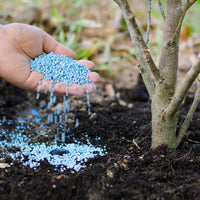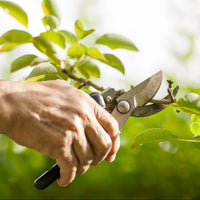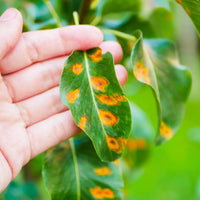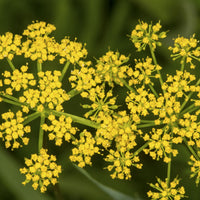Tips provided by UNH Cooperative Extension
- Pre-plant tips
- Do not pick up plants by their tops; the heavy weight of the soil will injure root hairs.
- Remove plants from containers just prior to planting, so plants will not sit on the ground in the hot sun.
- Water plants three hours before planting.
- Dig a hole 3 times as wide as the root ball and as deep as the height of the ball. If the plant is balled and burlapped, loosen the burlap and feel the top of the ball for an accurate measurement. When planting a tree make sure the trunk flare remains above ground level. If planted too deep, the roots will suffer from lack of oxygen.
- Place a tree in the planting hole with the trunk flare ½ – 1 inch above the surrounding grade to allow for some settling. Place a straight 1” x 1” stake across the hole to help determine planting depth.
- Remove all twine, rope, 4. Remove all twine, rope, and as much of the burlap as possible. Synthetic burlap or other non-degradable materials should be completely removed. If the tree ball is in a wire basket, cut away and remove the entire basket.
- For containerized plants, inspect the planting media for roots growing in a circle. Correct this situation by freeing and spreading out the roots, roughing up the sides or cutting through the roots in several places. If left unattended the roots will continue to grow in a circle and possibly girdle the plant.
- Stabilize the ball by placing good loam in the hole at ½ the ball depth. When needed, mix lime and superphosphate (with no additional fertilizer, manure or compost) with the backfill.
- Stake the plant now, but only on very windy sites. Research has shown that staked trees may develop a smaller root system and decreased trunk taper. Trees should not be staked longer than one year.
- Water the plant thoroughly until the surrounding soil is saturated to the depth of the root ball. Then allow the soil to settle.
- Resume backfilling and tap the soil lightly to eliminate air pockets. Do not “pack” the soil too firmly. Compaction will reduce fine air spaces needed for root development.
- When planting is completed, water the planting area deeply.
- Place mulch to a depth of 2 to 3 inches (deeper over lighter soils and shallow over heavy soils) tapering inward, so that no mulch touches the trunk. Mulch piled up against the trunk may promote crown rot and create a favorable environment for insects. The most common mulches are pine bark, aged wood chips and pine needles.







